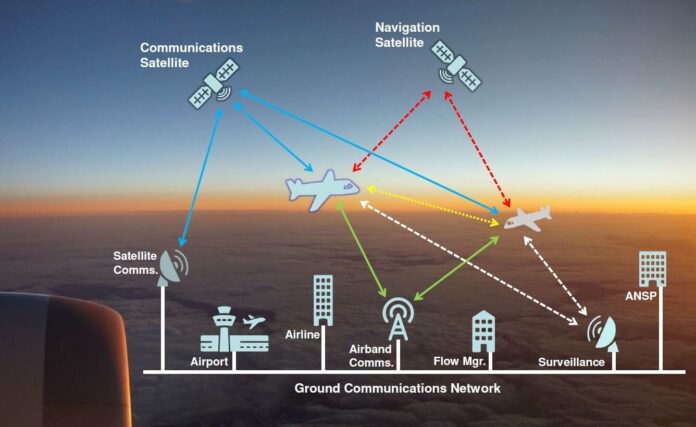Air traffic management (ATM) is an integrated system that facilitates the management of air traffic and airspace. ATM includes air traffic services, air traffic flow management, and airspace management. The goal is to safely, economically, and efficiently manage air traffic and airspace by providing facilities and seamless services. An air traffic management system (ATMS) is precisely what the name suggests: a system designed for efficient air traffic management.
Popular ATMS Technology and Systems
Air traffic management and control seek to prevent collisions by maintaining an orderly flow of air traffic. Management systems provide automation, real-time data processing, and machine-level accuracy and efficiency. Control towers employ many technologies and systems to facilitate efficient air traffic control and management. The systems are networked to share specific data for proactive decision-making and timely warnings and notifications.
Popular systems include surface movement and surveillance radars, holographic radars, and navigation and surveillance systems. Other standard ATM technologies include voice communication control systems, UHF and VHF communication systems, and radio modems/transceivers. Air traffic management technologies cover collision avoidance, noise monitoring systems, meteorological sensors/displays, and flight data information displays.
Read Also: Top 6: the Remote Access Trojan (Rat), Which Is the Best?
Airfield lighting control and monitoring technologies fall under ATMS. Training management software is also part of the technologies used to manage air traffic. Communications systems like UAVs, team radios, radio over IP, and legacy communications are some of the most necessary in ATM. Controllers need secure communication gateways and space applications. ATM systems provide autonomy of flights, situational awareness, and traffic flow optimization.
The Role of an Air Traffic Management System
Air traffic management span various technologies used to facilitate the control and management of air traffic and airspace. Each system has a unique role and communicates with other systems for seamless management and control. Air traffic control towers feature robust networks and information processing centers to enable real-time access and communication. ATM systems facilitate three primary services:
1) Air Traffic Services (ATS)
ATMS systems designed for air traffic services aim to maintain safe and orderly traffic flow. The systems provide necessary information to flight crews through flight information services (FIS) facilitated by air traffic control (ATC) services. Air traffic controllers perform air traffic services to prevent collisions. They maintain appropriate separation standards, timely clearances, and real-time instructions to create an orderly traffic flow.
2) Air Traffic Flow Management (ATFM)
ATFM’s primary objective is to regulate the flow of aircraft efficiently to avoid congestion of control sectors. Control centers must find the best balance between supply and demand, which can be achieved by staggering demand over time and space. ATFM enables better planning of control capacities to meet existing demand. Supply and demand management may involve imposing route restrictions on aircraft and refining sector management.
3) Airspace Management (ASM)
ASM seeks to manage the airspace as efficiently as possible. Airspace is considered a scarce resource that must satisfy the needs of many users, including civil and military. Airspace management services determine the way airspace is allocated to the users. Routes, zones, and flight levels are the primary means of managing airspace. ATM systems are optimized to support airspace management services for safe and efficient traffic flow.
Air Traffic Management System Key Takeaways
ATMS are the aggregation of functions that provide safe and efficient aircraft movement through all operational phases. The functions manage air-based and ground-based traffic flow and communications. Control towers use many systems to assist aircraft to depart from an airport, travel, and land at the destination airport. ATMS encompasses air traffic services, airspace management, and air traffic flow and capacity management.
Air traffic control towers have multiple dashboards and displays working with different systems and technologies. You can find an air traffic management system for voice, video, facsimile, and data communications, including analog and digital signaling. Such solutions may feature voice processing technologies like echo cancelation, speech compression, and noise reduction. Other systems streamline different aspects to support safe, efficient air traffic management.





